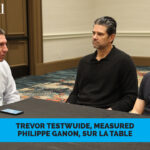For affluent consumers who are ultra-sensitized to luxury brands and their codes of meaning, savoir-faire is the ultimate flex. In some prominent families, purchases and self-presentation trigger complex negotiations between social obligation and self-expression. A perfect example is the age-old tradition of donning your grandmother’s heavy wedding set instead of daring to decline the matriarch’s gift. When you can afford to buy whatever you want, your brand affinities are so coded they become a full-fledged language. The HBO series “Succession” hinted at those codes, showcasing how consumption and power underlie such decisions in some high-powered circles.
In contrast to the sparkling glamour of “The Gilded Age” and “The White Lotus” (HBO’s concurrent wealth-driven series), “Succession’s” bland clothes, bleak food, and stiff interiors externalize the characters’ mounting familial dread. In a scene coded for luxury brand cognoscenti, father and son dine alfresco, twinning in Loro Piana baseball caps, a sliver of simpatico in a tense relationship where the mercurial, high-achieving father dismissed his offspring as “not serious people.” But we can imagine a small and much-needed victory for the son. Perhaps upon discovering the iconic ball cap, the son passed the brand on to his father, who acknowledged his son by wearing it in a rare glimpse of paternal receptivity.
Luxury brands can speak volumes, but how do you get the world’s most sophisticated consumers to listen? By cultivating the three values all iconic luxury brands share: authenticity, community, and culture.
1. Make authenticity your brand strategy.
Jay Z said, “You can feel when something’s authentic, and you can feel when it’s not.” In the age of artificial intelligence, it’s hard to tell where the artifice begins and ends, meaning authenticity as a strategy is a must for iconic luxury brands. It takes courage to ignore trends, but icons don’t copy or compromise. To be an icon, you must “do your thing” — brilliantly. Luxury brands have to strategize, but they also have to be cautious of overanalyzing and becoming paralyzed. Brands can evolve and experiment without losing themselves.
A current luxury collaboration that gets it right is Loewe and On Running — the 175-year-old Spanish luxury fashion house and the performance footwear brand. The campaign message, “Celebrating the craft of movement” and the drop itself do an excellent job of retaining both brands’ authentic spirit.
Loewe taps into On Running’s momentum and originality to reaffirm its relevance in new ways. This has allowed the luxury fashion brand to expand awareness and engagement within a new, compatible customer base with a penchant for elevated intellectual design. Loewe is doing the right thing considering rigidity is the enemy of relevance and resilience. The passing of the inimitable luxury retailer Henri Bendel, for example, proves that icons aren’t guaranteed to enjoy immortality.
On Running went viral by selling “a sensation loved by runners” called “running on clouds.” This experiential positioning emphasizes the brand as a disruptor. We’ve seen the brand on Brooklyn hipsters and Wall Street suits — clearly this elegant mashup with Loewe fills a gap for stylish On Running customers.
2. You’re only as strong as your community.
The stronger the patina, the more cachet some brands carry. In these cases, brand connoisseurship can confer a sense of belonging. Luxury goods can last for generations, meaning their emotional entanglements can outlive ownership.
On Running’s recently announced plans to pivot toward more direct-to-consumer channels prove the value of its intensive customer engagement strategy in ensuring the brand’s agility and long-term endurance. A natural product for social media, the footwear’s “clouds” have a unique design, feel incredible, and put a big bouncy spring in your step — fun things people want to show off, talk about, and learn more about. On social media and on the ground, On Running’s community of runners and others enjoy building relationships on the brand’s behalf.
To build an iconic brand, your strategy has to include coordinated communities of brand loyalists. Highsnobriety’s recent Luxury 3.0 whitepaper agrees, asserting that brands that invest in audience engagement today will dominate the luxury landscape tomorrow. With mutuality and shared ownership to activate them, your customers become powerful influencers and amplifiers for your brand.
3. Iconic luxury brands do it for the culture.
Luxury is an art form, and every brand asset must epitomize luxury. Pulling it off takes the best teams — from design to packaging and advertising. Creative people need fresh inspiration and freedom to thrive in this delicate ecosystem. You can’t fake creative vision. It’s imperative to find people with iconic taste and talent who align with your authenticity, nurture their gifts, and help them manifest magic.
With boundaries between culture and commerce dissolving, today’s luxury brands have an unprecedented opportunity to achieve iconic status. To close the distance between brands and fans, we must cultivate the brand values that all iconic luxury brands embody: authenticity, community, and culture.
Todd Irwin is the founder and chief strategy officer at Fazer, a New York-based brand strategy and creative agency.
View Original Article



















